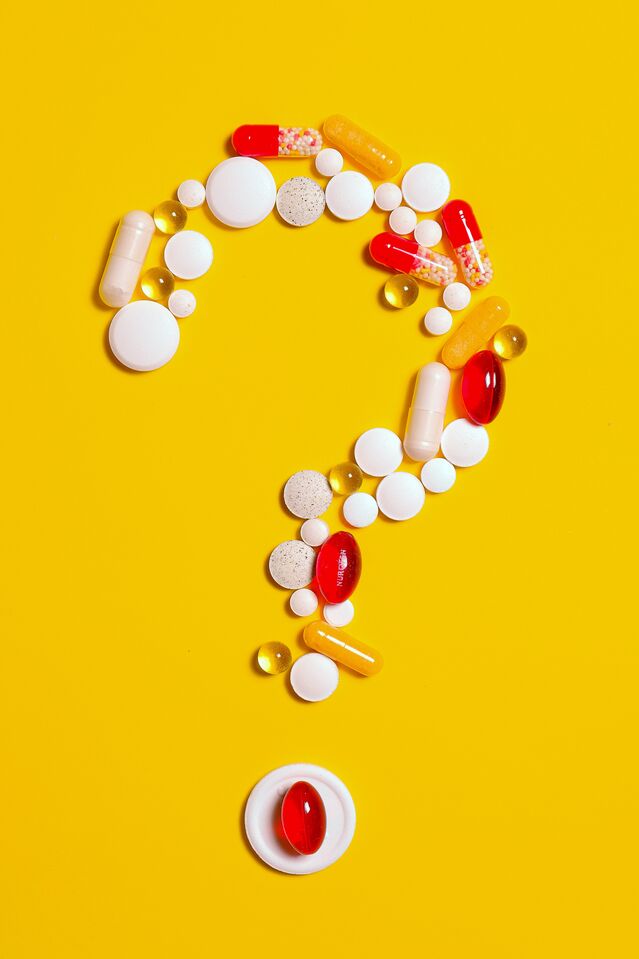Post-Traumatic Stress Disorder
The Latest in PTSD Treatment
Emerging ideas, promising treatments, and novel innovation.
Posted July 1, 2021 Reviewed by Chloe Williams
Key points
- PTSD science continues to advance exponentially, and exciting breakthroughs are on the horizon.
- Some emerging approaches include MDMA-assisted therapy, repeated ketamine infusions, theta burst stimulation and mediation-based interventions.
- These approaches remain experimental and can’t yet be considered the gold standard for PTSD treatment. Further investigation is required.

Today, I’m writing from the cutting-edge of innovation and research in PTSD. PTSD science continues to advance exponentially, and exciting breakthroughs are on the horizon. What I’m presenting in this post are some of the highlights from the last two years of scientific findings.
While these approaches can’t yet be considered the gold standard for PTSD treatment, what they represent is hope for an ever-expanding array of options that might be available for sufferers one day.
I’ve divided the treatments into three categories: psychotropic medications, procedures, and non-pharmacological approaches.
Psychotropic Medications
MDMA-Assisted Psychotherapy
May 2021 heralded promising results from the first phase 3 clinical trial testing MDMA-assisted psychotherapy for the treatment of PTSD. In MDMA-assisted therapy, the medication MDMA is only administered a few times, and the talk therapy component remains an integral part of this combination treatment.
In an article published in Nature Medicine, researchers from UCSF reported on results of their trial, which sought to test the efficacy and safety of MDMA-assisted therapy for the treatment of 90 patients with severe PTSD over 15 clinical sites. The results were impressive, with patients reporting a large drop in symptoms after receiving MDMA-assisted therapy.
Of particular interest was that the study included patients with common PTSD comorbidities such as dissociation, depression, a history of alcohol and substance use disorders, and childhood trauma. In this way, the study conditions better mimicked real-world clinical scenarios and therefore gave cause to be optimistic that such a treatment may eventually provide tangible benefit to patients treated in clinical practice.
Another plus for this research is that, for the duration of this study, the researchers reported that MDMA did not induce adverse events such as abuse potential or suicidality. Furthermore, unlike most medications for mental illnesses which are often taken daily for a substantial length of time, MDMA is only taken a few times.
A second phase 3 trial is currently underway and, if results continue to be encouraging, a drug application with the FDA is anticipated in 2022.
Repeated Ketamine Infusions
Ketamine is a non-barbiturate anesthetic and antagonist at the NMDA receptor. It is typically administered intravenously and has been used for years to provide pain relief to patients with severe burns. It was in this use that its dissociative properties became apparent. Ketamine may disrupt the process by which traumatic memories are laid down, as some studies show that those who received ketamine after a traumatic event were less likely to go on to develop PTSD.
In a 2021 study published in the American Journal of Psychiatry (in Advance), researchers from Icahn School of Medicine at Mount Sinai suggested that repeated ketamine infusions may lead to rapid symptom improvement in people with PTSD.
Thirty study participants who received six ketamine infusions over a two-week period experienced greater drops in PTSD symptoms and comorbid depressive symptoms compared with participants who received the sedative midazolam, a psychoactive placebo control administered approximately three times a week for two weeks.
Side effects associated with the ketamine included blurred vision, dizziness, fatigue, and headache. Of more concern is that some participants did report dissociative symptoms that emerged during their ketamine infusions.
It’s important to note the limitations associated with ketamine: Benefits may last only a few weeks and there is a potential for patients getting addicted to this treatment.
Riluzole: A Glutamatergic Modulator
In a 2020 study published in the Journal of Clinical Psychiatry, researchers designed a randomized controlled trial that investigated the efficacy of Riluzole augmentation for combat-related PTSD symptoms resistant to treatment with selective serotonin reuptake inhibitors (SSRIs) or serotonin-norepinephrine reuptake inhibitors (SNRIs).
Riluzole is a neuroprotective drug that blocks glutamatergic neurotransmission in the CNS. Glutamate dysregulation has been implicated in the pathophysiology of PTSD, so medications that regulate brain glutamate concentrations may be an effective treatment strategy for PTSD.
Over a four-year period, veterans and active duty service members with combat-related PTSD who were not responsive to SSRI or SNRI pharmacotherapy were randomized to eight-week augmentation with a starting dose of 100 mg/day of riluzole or placebo.
An analysis of PTSD symptom clusters showed significantly greater improvement on PTSD hyperarousal symptoms in the riluzole group. However, Riluzole augmentation was not superior to placebo on change in depression, anxiety, or disability severity.
Procedures
Stellate Ganglion Block Treatment
In 2008, media reports started to emerge about how a stellate ganglion block (SGB), an invasive manipulation of sympathetic nerve tissue, helped PTSD sufferers. The procedure, which consisted of injecting a local anesthetic into sympathetic nerve tissue in the neck, led to immediate symptom relief in a small group of patients.
Still, a positive outcome in a few cases is not sufficient to label something a treatment. A treatment should be more effective than a placebo, so it needs to be studied under controlled conditions. It took some time for the first controlled study of the SGB to be done, and the initial results, which were reported in 2016, were disappointing: The block was not superior to sham injection in relieving PTSD.
In early 2020, results of the first multisite, randomized clinical trial of (SGB) outcomes on PTSD symptoms were published in the Journal of the American Medical Association - Psychiatry and revealed reasons to not give up on SGB entirely. In this trial of active-duty service members with PTSD symptoms, the authors reported that two SGB treatments two weeks apart were effective in reducing PTSD scores over a period of eight weeks.
The study was limited by the fact that the service members had mild-moderate baseline level of PTSD symptom severity to begin with and the short follow-up time of only eight weeks means uncertainty about how long the benefits of SGB might last. Still, these more recent and encouraging results suggest that SGB merits further investigation and may well prove to earn a place as an adjunct treatment for PTSD.
Theta Burst Stimulation (TBS) — A Novel Form of Repetitive Transcranial Magnetic Stimulation
In a 2020 study published in Military Medicine, Australian researchers from the Centre for Post-traumatic Mental Health reported on results of a pilot study that used Theta Burst Stimulation (TBS), a novel form of Repetitive Transcranial Magnetic Stimulation shown to improve depressive disorders in Australian veterans with PTSD.
In a case series, eight Australian Defense Force veterans with PTSD received 20 bilateral TBS treatments over a four-week period. Participants exhibited reductions in both PTSD and depression symptoms, as well as improvements in working memory and processing speed. Furthermore, the procedure was well tolerated, with no serious side effects or adverse events reported.
While these early results are encouraging, the limitations of this study design mean that large-scale, randomized controlled trials are warranted before this potential approach could be considered a mainstream treatment option.
Non-Pharmacological Approaches
Meditation-Based Interventions
In a 2021 article published in Advances in Mind-Body Medicine, authors Haider and Sharma reviewed the extant literature on how effective meditation-based interventions are for the treatment of PTSD. They reported how, in randomized controlled trials, interventions such as transcendental meditation, mantra meditation, mindful meditation, breathing-based meditation, and mindfulness-based exposure showed improvements in PTSD symptoms.
That said, issues with the quality of some of these studies remain. Until more data is available, meditation-based therapy remains a valuable adjunct or add-on treatment to more established PTSD treatments, but not a recommended stand-alone treatment.
Certified Peer Specialists as Part of the Treatment Team
In a 2020 article published in the Journal of Clinical Psychology, researchers at Boston Medical Center used a mixed methods approach to investigate if PTSD treatment delivery by peer specialist providers could increase access to and engagement with PTSD treatment in low-resource settings.
In this pilot study they tested the feasibility, acceptability, and initial effectiveness of a brief cognitive-behavioral therapy for PTSD delivered by four certified peer specialists to 18 clients. Data from this preliminary study suggest the intervention was feasible and associated with high client satisfaction.
Participants in the study showed significant improvements in PTSD, depressive, anxiety, and general stress symptoms. This research offers hope for combatting the troubling issue of many PTSD sufferers lacking access to mental healthcare, especially those living in rural, remote, and inner-city areas. The prospect of being able to increase access to good quality PTSD care by leveraging the power of peers is exciting.
This post highlights new and emerging potentials for treating PTSD and trauma-related stress disorders. For now, however, these treatments remain largely experimental and in need of further investigation.




